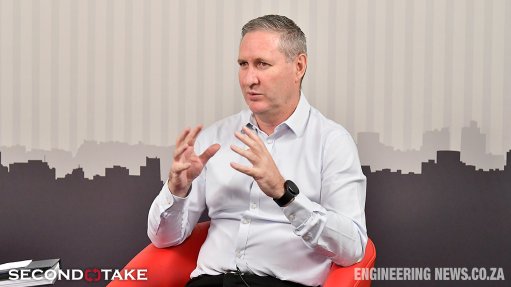Storage shelving, better option for plastic pallets



ORGANISATION Companies should also pursue pre-planning, organising and labelling the racking system according to their products, as this can prevent a warehouse from becoming disorganised
TECHNOLOGY UPTAKE There is a trend of warehouses starting to use artificial intelligence
Pallet supplier Premier Pallets posits that, for companies to optimise storage space, a racking-system (racking without centre support or shelving) is the logical way to go, however, this premise comes into question when companies use plastic pallets in factories.
The company indicates that the installation of a racking system is cheaper than shelving, as less steel is used. However, the cost of the pallet used in racking will increase in the long run.
With shelving, a plastic pallet can carry the same weight as when it is “floor-standing”, for example, 5 000 kg, but with “racking without centre support”, the stress increases and the pallet can only carry 1 200 kg. The company emphasises this information, noting that it is critical for warehouse personnel to be aware of these specifications, so that they may prevent racking-system failures that could result in loss of life and damage to stock.
The company outlines the cost comparison on the kind of pallet used where the pallet is carrying 1 200 kg: when racking, companies must use a strong pallet costing R1 270 excluding VAT, but when shelving the pallet would only cost R284 excluding VAT. A difference of R986 multiplied by a thousand pallets would therefore pose a huge cost to companies of about R1-million.
According to Premier Pallets, companies should limit themselves to a maximum of 1 200 kg a pallet when racking, therefore using more pallets than when they shelve.
The company also highlights that another factor to keep in mind if companies are exporting their product on pallets, is that en route the pallets might be placed in a racking system in the port. Therefore, the choice of pallet may be very important for the pallet to be able to carry at least 1 200 kg. The characteristics of plastic mean that it can generally carry only 1 300 kg, without deflecting too much.
The way in which products are placed on a pallet is also emphasised. Spreading the weight across the total surface of the pallet is noted as the correct way to ensure that neither the pallet nor the product is damaged.
Premier Pallets therefore stresses that the principle of “I can sit on your lap, but can’t stand on your toe” is also applicable with pallets, and must be kept in mind at all times.
The company also notes that a simple arithmetic is sometimes overlooked when placing products on a pallet on top of one another. Therefore, companies should be wary of the dangers of overloading when double- or triple-stacking on a floor standing pallet.
For example, should a pallet have the capacity to carry only 2 000 kg, but 1 500 kg is loaded onto the pallet and then double-stacked – the pallet will then carry 3 000 kg instead of 2 000 kg and will get damaged. Moreover, a common issue is that some factories and warehouses even triple-stack.
A mistake that commonly occurs when a racking system is installed is the overhang on both sides of the pallets is not taken into account. In such instances, companies will be left with limited space and the whole racking system may be a disaster.
The company also highlights a range of other common warehouses issues, including ensuring that the most popular inventory is at the front of the warehouse, where it is readily available. When inventory location is not organised and not easily available, pickers will take longer to find items that need to be shipped. This can ultimately lead to a backup in labour. Therefore, sequenced order picking is put forward for consideration.
Companies should also pursue pre-planning, organising and labelling the racking system according to their products, as this can prevent a warehouse from becoming disorganised, by identifying the most efficient location for all inventory, factoring in the products storage characteristics, family and supply needs.
Moreover, storage and racking systems should be reconsidered according to each company’s particular warehouse needs and layouts. For example, powered-mobile racking and double-deep racking could be undertaken.
Companies can also employ narrow-aisle equipment instead of counterbalance machinery, as this can increase warehouse storage capacity.
It is also posited that the use of a professional forklift company to complete a site evaluation will allow companies to gain the best equipment for its applications, and will also ensure that companies are able to maximise storage space.
Lastly, the size of pallet must also be taken into account when deciding how far the upright beams would be spaced. The standard size for plastic pallets in South Africa is 1.2 m × 1 m. The pallets could either go in on the long side (1.2 m) or on the short side (1 m). Going in on the short side would mean the space between the beams would be in multiples of 1.2 m.
Comments
Press Office
Announcements
What's On
Subscribe to improve your user experience...
Option 1 (equivalent of R125 a month):
Receive a weekly copy of Creamer Media's Engineering News & Mining Weekly magazine
(print copy for those in South Africa and e-magazine for those outside of South Africa)
Receive daily email newsletters
Access to full search results
Access archive of magazine back copies
Access to Projects in Progress
Access to ONE Research Report of your choice in PDF format
Option 2 (equivalent of R375 a month):
All benefits from Option 1
PLUS
Access to Creamer Media's Research Channel Africa for ALL Research Reports, in PDF format, on various industrial and mining sectors
including Electricity; Water; Energy Transition; Hydrogen; Roads, Rail and Ports; Coal; Gold; Platinum; Battery Metals; etc.
Already a subscriber?
Forgotten your password?
Receive weekly copy of Creamer Media's Engineering News & Mining Weekly magazine (print copy for those in South Africa and e-magazine for those outside of South Africa)
➕
Recieve daily email newsletters
➕
Access to full search results
➕
Access archive of magazine back copies
➕
Access to Projects in Progress
➕
Access to ONE Research Report of your choice in PDF format
RESEARCH CHANNEL AFRICA
R4500 (equivalent of R375 a month)
SUBSCRIBEAll benefits from Option 1
➕
Access to Creamer Media's Research Channel Africa for ALL Research Reports on various industrial and mining sectors, in PDF format, including on:
Electricity
➕
Water
➕
Energy Transition
➕
Hydrogen
➕
Roads, Rail and Ports
➕
Coal
➕
Gold
➕
Platinum
➕
Battery Metals
➕
etc.
Receive all benefits from Option 1 or Option 2 delivered to numerous people at your company
➕
Multiple User names and Passwords for simultaneous log-ins
➕
Intranet integration access to all in your organisation



















